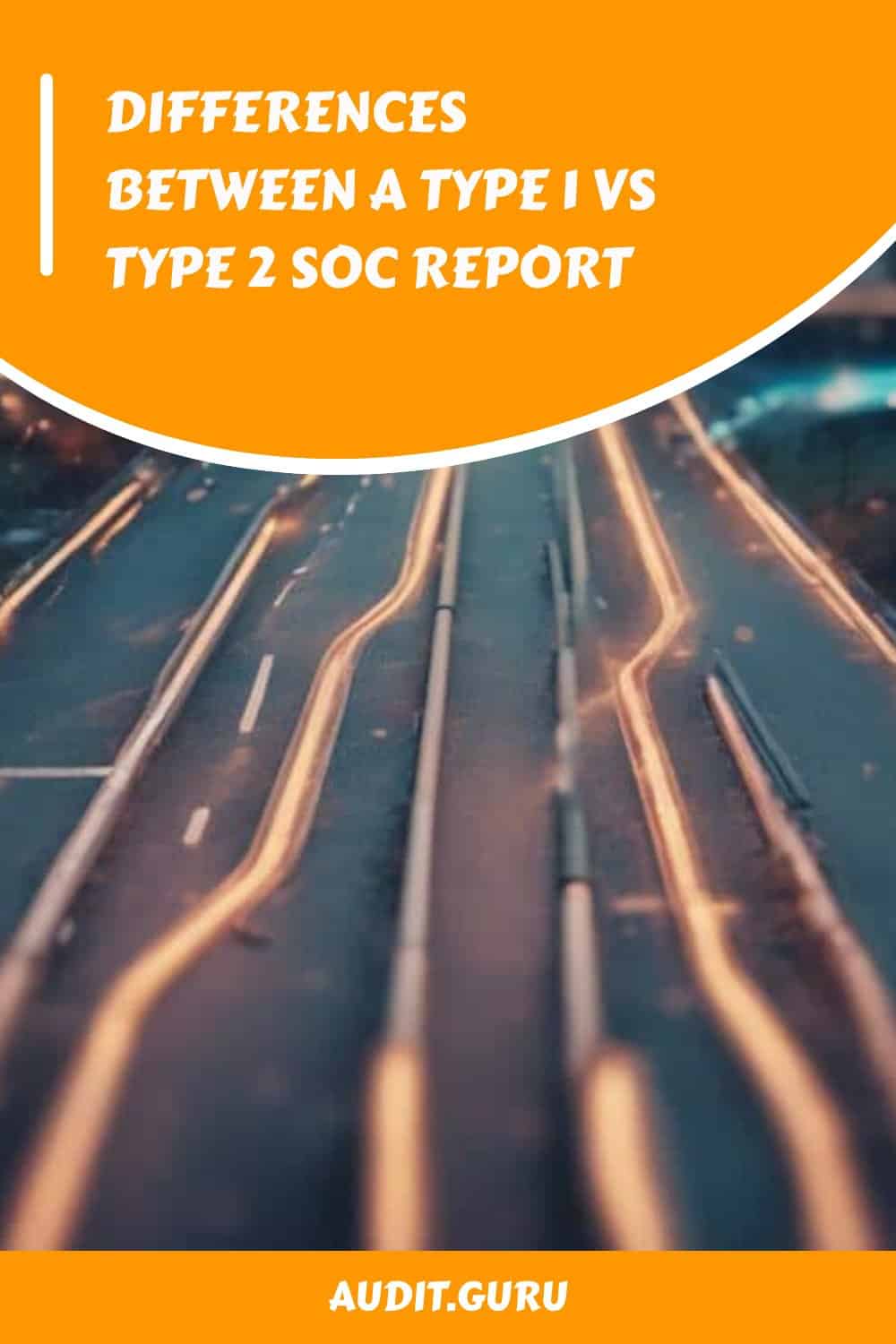Just as Hercules faced his twelve labors, you’re confronting the challenge of navigating SOC reports, a cornerstone of demonstrating your organization’s commitment to security and control.
You’ve likely heard of SOC reports, but understanding the differences between a Type 1 and Type 2 report is crucial for ensuring your organization’s practices align with its promises. Type 1 offers a snapshot, while Type 2 examines the effectiveness over time.
By exploring these distinctions further, you’ll be equipped to decide which report better serves your organization’s needs and showcases your dedication to maintaining robust controls. This knowledge will set the foundation for a strategic approach in your audit process, allowing you to navigate these waters with confidence.
Key Takeaways
- SOC 1, SOC 2, and SOC 3 reports cater to different aspects of service organization controls.
- Type 1 SOC reports evaluate design effectiveness at a specific point in time.
- Type 2 SOC reports assess both design and operational effectiveness over a period.
- Starting with a Type 1 report is beneficial for understanding the audit process before moving to the more comprehensive Type 2.
Understanding SOC Reports
A SOC report, provided by a service organization, streamlines the audit process for user entities by eliminating the need for multiple individual audits. Now, you’re probably someone who values freedom, especially in how your business operates.
Understand this: embracing a SOC report means you’re not just checking a box for compliance; you’re unlocking a door to efficiency. It’s about giving you and your stakeholders the peace of mind that your operations are secure and effective, without the hassle of undergoing numerous audits.
This report is your ally in demonstrating due diligence, building trust, and gaining a competitive edge. It’s not just an audit tool; it’s your ticket to freedom in a landscape cluttered with regulatory demands. So, leverage it to your advantage and focus on what you do best.
Different Types of SOC Reports
Having explored the overarching value of SOC reports for business operations, let’s now focus on the various types available to understand how they cater to different needs. Here’s a quick look at the different SOC reports:
| Report Type | Purpose |
|---|---|
| SOC 1 | Focuses on controls relevant to internal control over financial reporting. |
| SOC 2 | Deals with controls related to security, availability, processing integrity, confidentiality, or privacy of data processing and storage. |
| SOC 3 | A general use report summarizing the information in SOC 2 for a broader audience. |
| SOC for Cybersecurity | Assesses a service organization’s cybersecurity risk management program. |
| SOC for Supply Chain | Evaluates controls within a supply chain. |
Each type serves a unique purpose, offering you the freedom to choose what best aligns with your specific needs and objectives.
Similarities Between Report Types
While each SOC report serves a specific purpose, they all share common ground in providing vital insights into a service organization’s control environment. You’re looking for freedom in managing your business relationships, and understanding these reports is key to building trust without being bogged down by unnecessary audits.
Both Type 1 and Type 2 SOC reports dive deep into the systems your service providers use, aiming to ensure they meet specific control objectives or trust services criteria. They don’t just list controls; they show how multiple controls work together to secure your data. And importantly, both include management’s assertion about the design and effectiveness of these controls.
This transparency is crucial, allowing you to engage with service organizations confidently, knowing their practices are thoroughly vetted.
Type 1 SOC Report Explained
To fully grasp the scope and purpose of a Type 1 SOC report, it’s crucial to understand that it assesses the design effectiveness of a service organization’s controls at a specific point in time.
If you’re aiming for freedom in how you manage your business’s data and operational integrity, starting with a Type 1 SOC report is your first step towards demonstrating a commitment to security and control to your clients and partners.
It’s a snapshot, providing assurance that your controls are designed appropriately to mitigate risks. This report is ideal for establishing a baseline of trust and showing your dedication to maintaining a secure and controlled environment.
It’s your initial move towards a comprehensive assurance strategy, offering peace of mind to everyone involved.
Type 2 SOC Report Overview
Building on the foundation of a Type 1 SOC report, let’s explore the comprehensive nature of a Type 2 SOC report, which evaluates both the design and operating effectiveness of a service organization’s controls over a specific period.
You’re not just looking at a snapshot here; you’re getting the full movie. This report takes you on a journey over time, typically six to twelve months, offering a clear, ongoing picture of how well a service organization’s controls perform.
It’s about continuous verification, not just a one-time check. You gain the freedom to trust, knowing these controls aren’t just designed well but also work effectively day in, day out.
It’s your path to assurance without being bogged down by constant worry or oversight.
Key Differences Highlighted
Diving into the key differences, it’s essential you understand how Type 1 and Type 2 SOC reports vary in scope and assurance level. Type 1 reports capture a snapshot, focusing on the design of controls at a specific moment. In contrast, Type 2 extends beyond, examining the effectiveness of these controls over time, offering you a broader perspective.
Consider these key distinctions:
- Scope of Audit: Type 1 is a one-time look; Type 2 monitors over months.
- Assurance Level: Type 2 delivers higher confidence by testing control effectiveness.
- Detail Depth: Type 2 includes detailed testing outcomes, offering you a richer, more actionable insight.
You’re armed with knowledge to navigate the complexity of SOC reports, aiming for the freedom to choose what’s best for your organization.
Choosing Between Type 1 and Type 2
When deciding between a Type 1 and Type 2 SOC report, it’s crucial to consider your organization’s specific needs and the level of assurance you aim to provide to your clients.
If you’re just starting out and looking to get your feet wet, a Type 1 report might be the way to go. It’s a snapshot, giving you the freedom to assess how your controls stand at a single point in time.
However, if you’re ready to demonstrate a deeper commitment to security and operational integrity, a Type 2 report offers a more thorough validation, covering a period of time. This choice gives you the power to showcase ongoing reliability to those you serve, aligning with a higher standard of trust and transparency.
Audit Process Insights
Understanding the nuances between Type 1 and Type 2 SOC reports sets the stage for a deeper exploration into the audit process itself, ensuring you’re well-prepared for what lies ahead.
When diving into the audit process, remember:
- Preparation is key. You’ll need to gather all relevant documentation and ensure your team understands the process.
- Open communication with the auditor can significantly smooth the process.
- Expect rigorous examination of your controls—whether design (Type 1) or both design and operational effectiveness (Type 2).
This process isn’t just a hurdle; it’s your chance to shine, demonstrating your commitment to security and operational excellence.
Dive in, armed with knowledge, and embrace the journey toward proving your organization’s robustness and reliability.
Benefits of SOC Reporting
SOC reporting offers numerous advantages, including bolstering your organization’s reputation for reliability and security among clients. You’ll discover that navigating the complex landscape of compliance becomes a breeze, giving you the freedom to focus on what you do best—innovating and growing your business. Here’s a quick look at the benefits laid out in an easy-to-understand format:
| Benefit | Description |
|---|---|
| Enhanced Trust | Clients feel secure knowing you’re audited. |
| Competitive Edge | Stand out in the market with proven controls. |
| Operational Improvement | Identify and fix gaps in your processes. |
| Regulatory Compliance | Meet legal and industry standards effortlessly. |
| Freedom and Flexibility | Focus on growth, knowing your controls are solid. |
Embrace SOC reporting to unlock these benefits and steer your organization towards a future where you’re not just compliant, but ahead of the curve.
Preparing for a SOC Audit
Having explored the benefits of SOC reporting, let’s now focus on how you can effectively prepare for a SOC audit. Embrace the preparation phase as your pathway to freedom from operational inefficiencies and vulnerabilities. Here’s how you can gear up:
- Identify and Understand Your Controls: Pinpoint the controls relevant to the SOC report you’re aiming for. Know them inside out.
- Gather Documentation: Ensure all supporting documents are readily available. This includes policies, procedures, and evidence of control effectiveness.
- Conduct a Pre-Audit Assessment: This self-evaluation reveals gaps and areas for improvement before the auditor steps in.
Frequently Asked Questions
How Do International Standards and Regulations Impact the Requirements or Acceptance of SOC Reports?**
International standards and regulations shape how you use SOC reports. They ensure your practices align with global expectations, affecting their acceptance. You’ll need to navigate these to leverage SOC reports effectively in your operations.
This Question Delves Into the Global Applicability and Recognition of SOC Reports, Considering the Varying Regulatory Landscapes Across Different Countries and Industries.
You’re navigating global markets, where freedom meets regulation head-on. SOC reports offer a passport across borders, adapting to varied regulations. They’re your ticket to credibility, no matter where your business adventures take you.
Can a Service Organization Switch Auditors Between Type 1 and Type 2 SOC Reports, and What Are the Implications?**
You can switch auditors between Type 1 and Type 2 SOC reports, but it’s important to consider consistency, auditor expertise, and potential impacts on credibility. Always weigh the benefits against any possible downsides.
Here, the Focus Is on Understanding the Continuity or Potential Consequences of Changing the Auditing Firm Between Conducting Type 1 and Type 2 SOC Audits, Including Impacts on Credibility, Process, and Outcomes.
Switching auditors between your Type 1 and Type 2 SOC audits might seem like chasing freedom, but it can actually muddy the waters, affecting your firm’s credibility and complicating the audit process.
How Do Stakeholders Outside the Immediate User Entities, Such as Regulators or Investors, Use SOC Reports in Their Decision-Making?**
You’d use SOC reports to gauge a company’s security and operational integrity. Regulators ensure compliance, while investors assess risk. It’s about making informed, confident decisions, without getting bogged down in technical audit specifics.
Conclusion
As you’ve journeyed through the maze of SOC reports, imagine standing at a fork in the road: one path leads to the Type 1 report, offering a snapshot of your controls at a single moment in time, while the other winds toward the Type 2 report, with its ongoing scrutiny over a period.
Both routes promise the treasure of trust and excellence. Choosing wisely isn’t just about compliance; it’s about showcasing your unwavering commitment to safeguarding your clients’ most precious assets.









